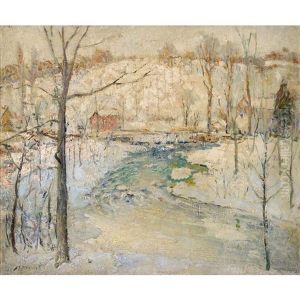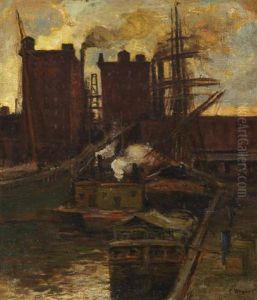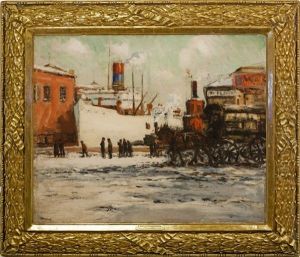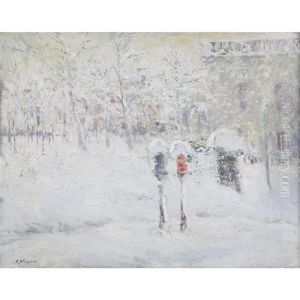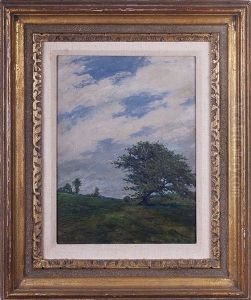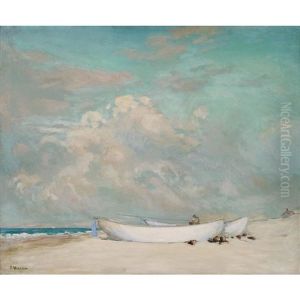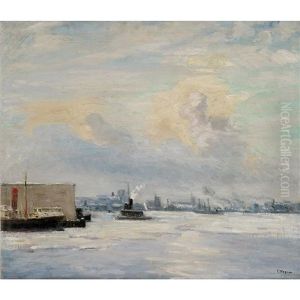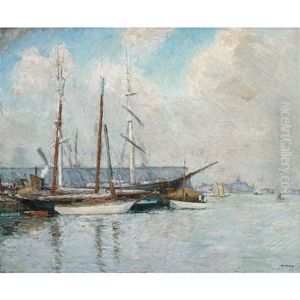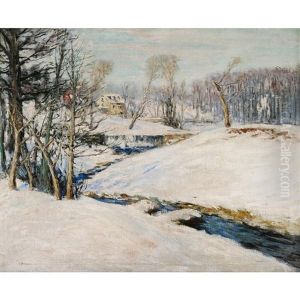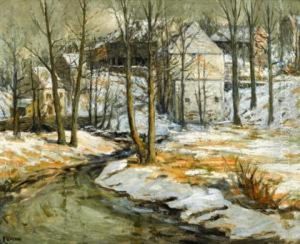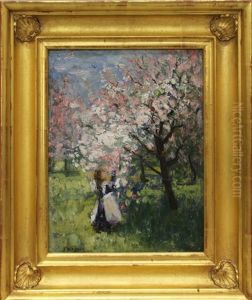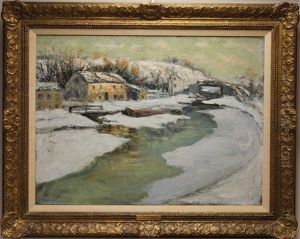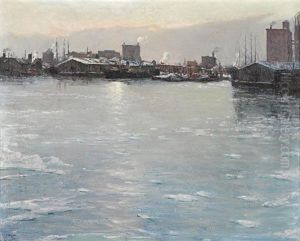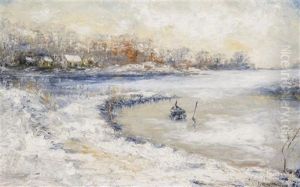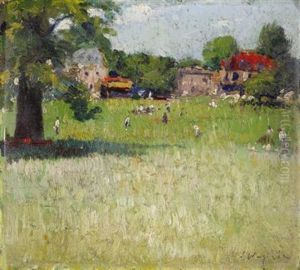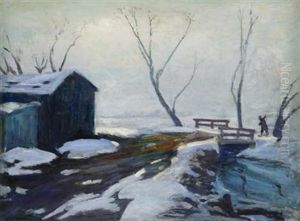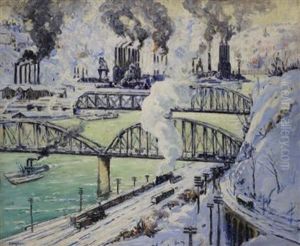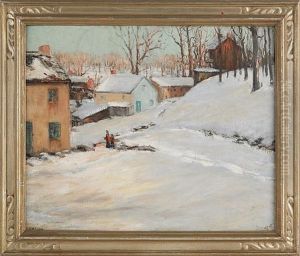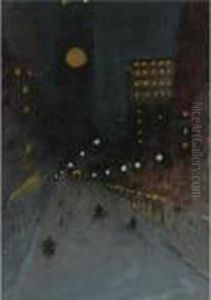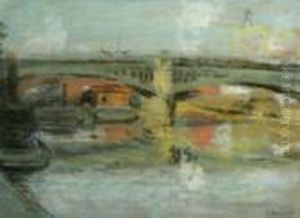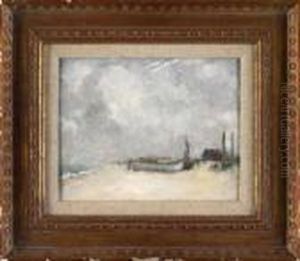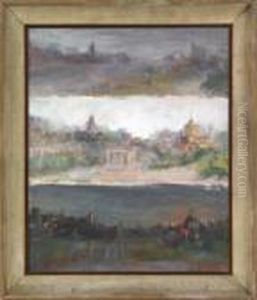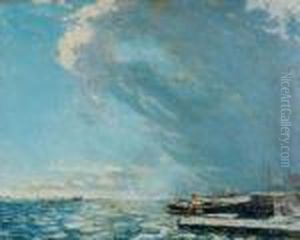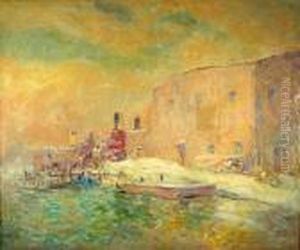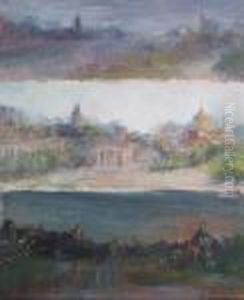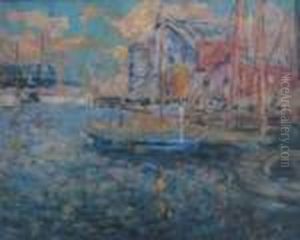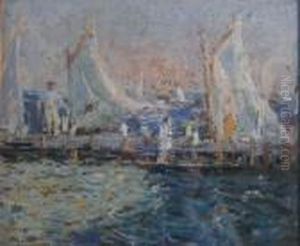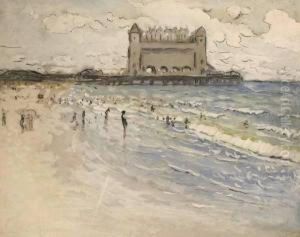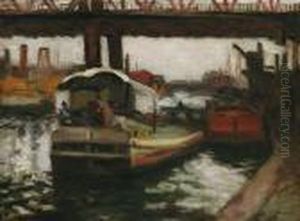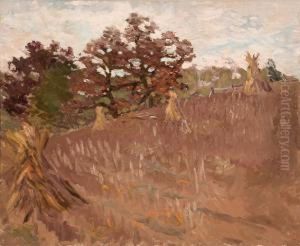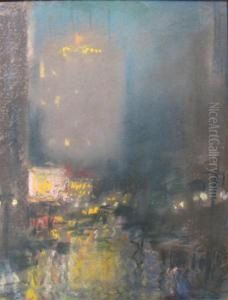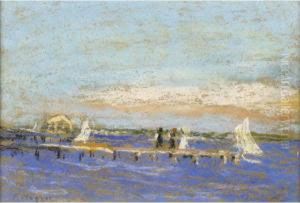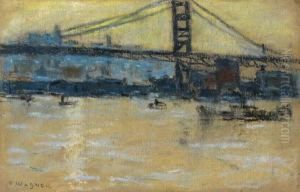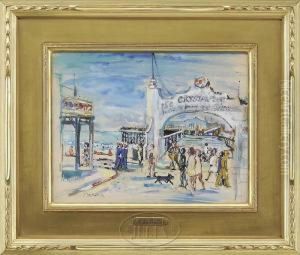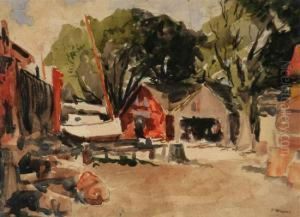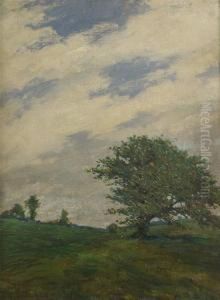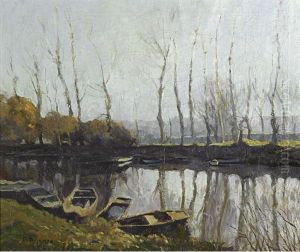Frederick R. Wagner Paintings
Frederick R. Wagner was an American artist known primarily for his Impressionist landscapes and urban scenes. Born in Port Kennedy, Pennsylvania, in 1864, Wagner initially trained as a sign painter before pursuing a more formal education in art. He studied at the Pennsylvania Academy of the Fine Arts under Thomas Pollock Anshutz, a student of Thomas Eakins, and he was also influenced by the work of French Impressionists, which was gaining popularity at the time.
In his early career, Wagner worked as an illustrator and commercial artist, but he gradually shifted his focus to painting. His work often depicted the industrial and urban environments of Philadelphia, capturing the vibrancy and dynamism of American city life in the late 19th and early 20th centuries. Wagner’s paintings are characterized by their bold brushwork and use of color, reflecting the Impressionist emphasis on light and atmosphere.
Wagner became a member of the Philadelphia Sketch Club and later the Pennsylvania Academy of the Fine Arts, where he exhibited regularly. His paintings were also shown at the National Academy of Design in New York and the Art Institute of Chicago, among other institutions.
Throughout his career, Wagner remained an active figure in the Philadelphia art scene and was influential in promoting Impressionism in the United States. Although he never achieved the same level of fame as some of his contemporaries, his work has been recognized for its contribution to American Impressionism and is held in several museum collections.
Frederick R. Wagner passed away in 1940, leaving behind a legacy as one of Philadelphia’s important Impressionist painters. His work continues to be appreciated for its energetic portrayal of American urban landscapes and its role in the broader narrative of American art history.
